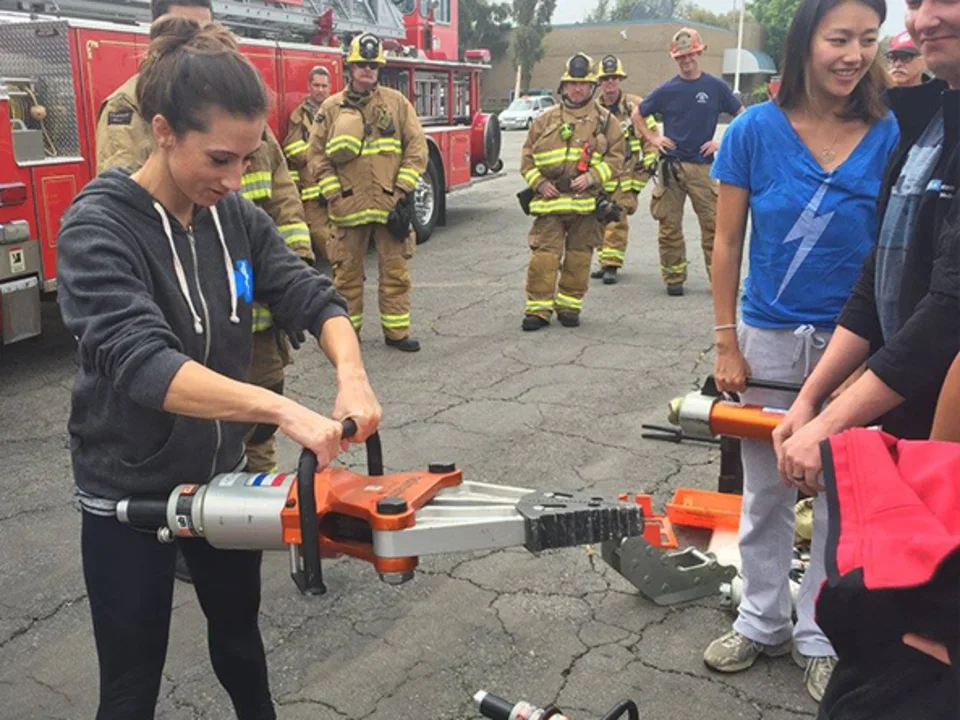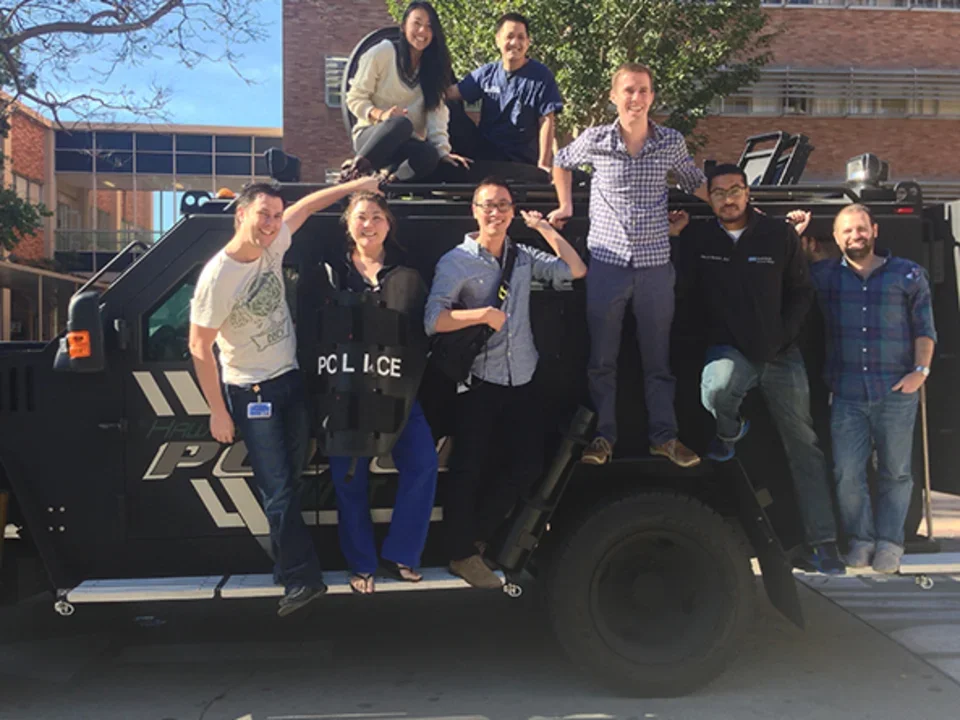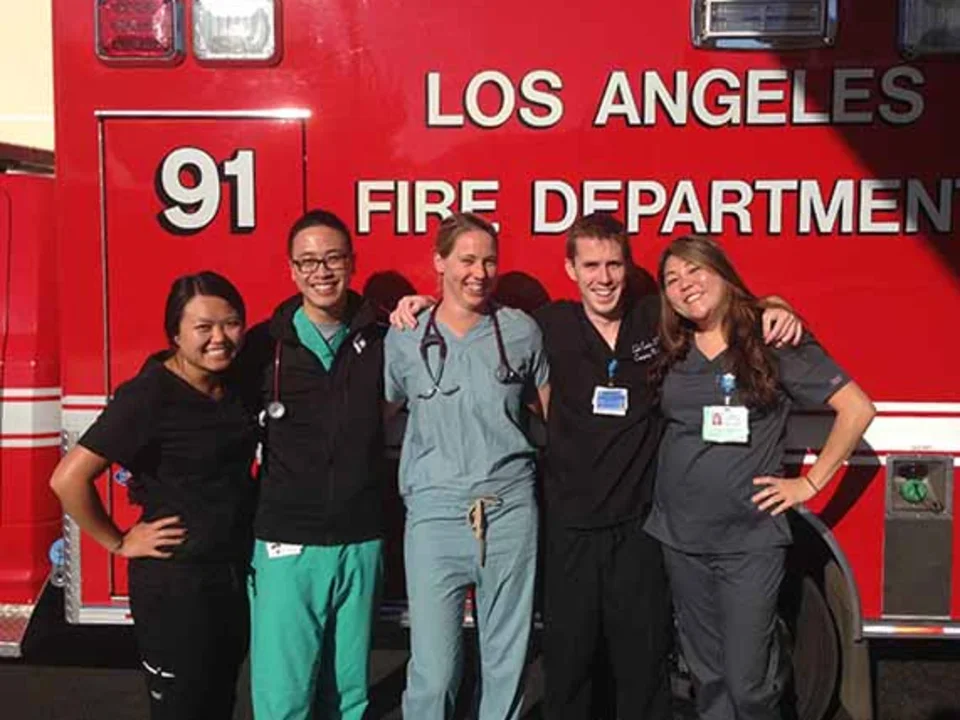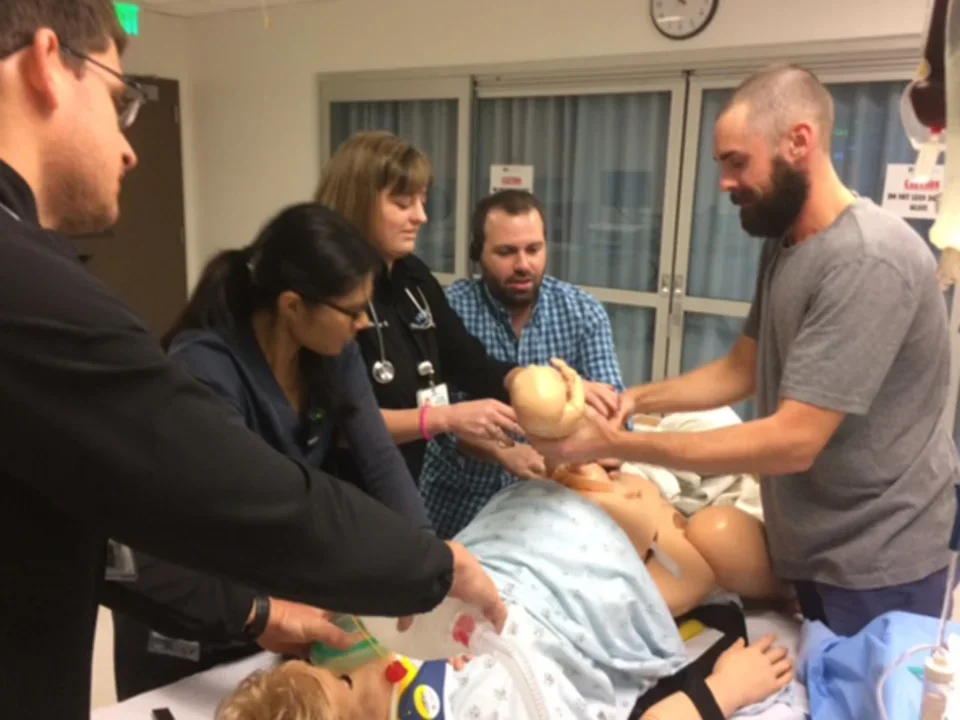Other Clinical Opportunities
Clinical Options
Being part of University of California, Los Angeles and the UCLA Health system offers our residents unique access to an abundance of opportunities to pursue a wide breadth of interests within Emergency Medicine.
Center for Prehospital Care
Contacts: Dr. Tabitha Cheng (Medical Director), Assistant Clinical Professor of Emergency Medicine at UCLA, and Todd LeGassic (Executive Director).
Center for Prehospital Care Website
For over 25 years, the UCLA Center for Prehospital Care has been the leading academic center on the West Coast for the study and improvement of prehospital care. The center has an international reputation for both the quality of its faculty and graduates, as well as high-quality and practice-changing research. Born out of an agreement between the UCLA Emergency Medicine Center and the Los Angeles Department of Community Safety's Emergency Medical Services, this academic hub has grown to become one of the largest educators of pre-hospital personnel in the United States. The Center trains thousands of paramedics, EMTs, lifeguards, police officers, campus security officers, parking enforcement officers, dispatchers, and other first responders every year and routinely hosts continuing education programs on new and evolving issues within prehospital care.
Many alumni have pursued advanced fellowships in EMS/prehospital care and taken leadership positions across the country. Read more about Dr. Clayton Kazan (EM Class of 2005) who serves as the Medical Director for the Los Angeles County Fire Department.
Center for Hyperbaric Medicine
Center for Hyperbaric Medicine Website
UCLA Hyperbaric Medicine specializes in a host of medical conditions including the management of complex wounds, decompression sickness (DCS), and late radiation injuries. As one of two hyperbaric chambers in the greater Los Angeles Area and the near-coastal location of UCLA, our center routinely accepts regional transfers for numerous emergent conditions requiring hyperbaric treatment. The chamber operates 24 hours per day, seven days a week and offers a popular elective for residents to learn about hyperbaric treatment and dive emergencies.
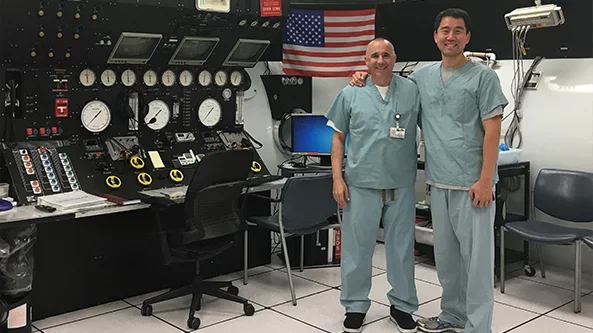
UCLA Simulation Center
Contact: Dr. Steven Lai, Program Director at UCLA Emergency Medicine
UCLA Simulation Center Website
The David Geffen School of Medicine at UCLA maintains a state-of-the-art, 9,000 square feet Simulation Center that is routinely utilized by our residency for resuscitation training, procedure labs, and skills sessions. UCLA was among the first institutions to integrate simulation technology and continually invests in the latest resources to remain a leader nationwide. Simulation and small group conferences are highlighted in our residency providing an immersive and high-fidelity experience for our residents. The Medical Simulation Elective remains one of the most popular electives for our residents, while our Medical Education and Simulation Fellowship offers Emergency Medicine graduates a chance to cultivate their skills to become a preeminent clinician educator and create an academic niche of their own.
